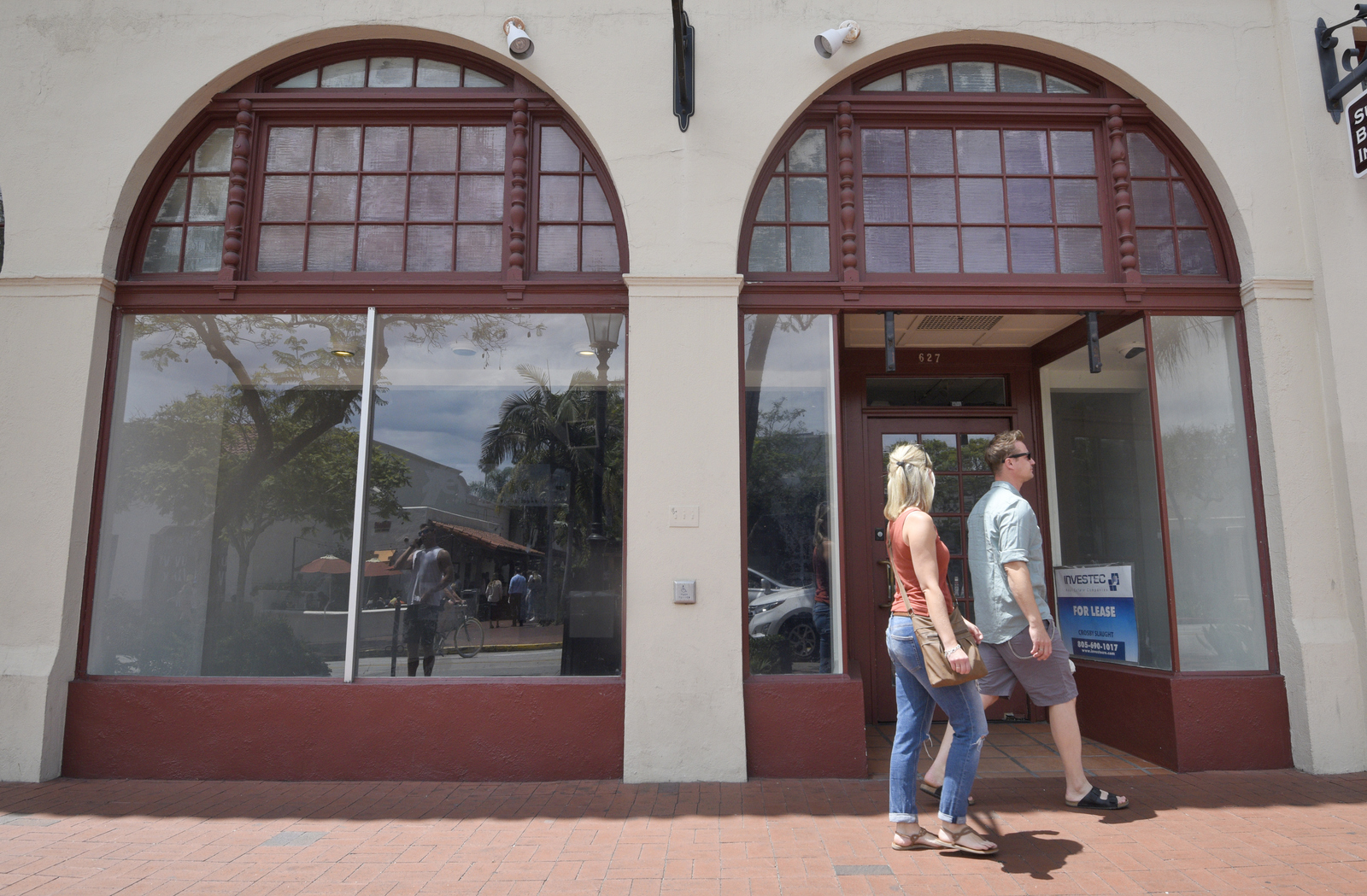Report Describes Santa Barbara as Unfriendly to Business, Suffocated by Red Tape
New Study Doesn’t Hold Back, But Offers Concrete Solutions

The City of Santa Barbara “does not have a business-friendly reputation,” its permitting process for new retailers is “expensive and high-risk,” and staff is “not enthusiastic to expedite development.” Those are three key findings from a newly released, no-holds-barred report on the State Street vacancy problem and the recommended steps City Hall ought to take to save its downtown.
The $84,000 report, commissioned by the City Council last January and published by the Manhattan Beach–based firm Kosmont & Associates this week, retreads some of the same ground that previous State Street studies and discussions have covered ― downtown needs to cater more to locals, retail is now all about authenticity and the “shopping experience,” housing will bring life back to the area, and so on. But the report also makes new observations and suggestions that cut to the core of the issue, including its uncompromising critiques of the city’s planning department.
First, Kosmont stresses, the State Street dilemma is far from solved, despite recent comments from city leaders that a solution is right around the corner. The downtown retail vacancy rate is significantly higher than the rest of the city’s ― 9 percent compared to 3.2 percent ― and in the last five years, countywide retail sales have increased while State Street retailers have seen a 15 percent dip. The area has “lost its cache for high-end retail customers,” the report says, while property owners are keeping their asking lease rates too high “because of past rent expectations.” Of the 1.5 million square feet of downtown retail space, approximately one-third “is not supportable in the long term” unless the city can draw in more customers, residents, and office workers.
As for possible solutions on a regulatory level, Kosmont recommends that City Hall first “fundamentally review and revamp” its zoning and permitting processes. The suggestion echoes what landlords, architects, private planners, and business owners have been saying since downtown vacancies reached crisis levels in 2015. Kosmont also recommends the city prioritize economic development (a key takeaway from a previous State Street study commissioned in 2017), work with other business organizations, like the Downtown Organization and the Chamber of Commerce, to clarify their roles, and establish an “Adaptive Reuse Zone” with less-restrictive building-permit rules.
Kosmont spends a lot of ink describing the importance of hiring, at the very least, an economic development director, if not creating an entirely new division at City Hall. “The real estate development/entitlement process in California is extremely time consuming and expensive for the private sector,” the consultants say, “and anything that can be done to enhance transparency and communication between the city staff and development community will be beneficial.” Kosmont has worked with a number of California communities of similar size ― Pasadena, San Luis Obispo, Livermore, Ventura, and Whittier ― that have all adopted a director or division, all with great success. Kosmont estimated Santa Barbara could do the same with a budget of $300,000-$1,000,000, using funds from Measure C or downtown parking fees.
Much more so than earlier reports, Kosmont’s gets specific on how to bring additional housing downtown, a strategy that both public officials and private stakeholders agree is critical to a revival. Kosmont recommends creating infill housing and live/work spaces in the back of vacant buildings; incentivizing a blend of residential, office, and hotel reuse of empty properties; facilitating new workforce housing, including micro-units, between Chapala and Anacapa streets; and replacing underused parking structures with new apartments and condos.
On an equally granular level, the report says Santa Barbara should make the downtown shuttle free by eliminating its 50-cent fee; be more generous with outdoor dining permits; help create rooftop restaurants; put on more special events and pop-ups; encourage window displays to avoid dead zones; allow for amplified music after 10 p.m.; entice UCSB to open a downtown satellite campus; and perhaps most importantly, consider creating a pedestrian mall closed to car traffic for two to three blocks of State Street. Kosmont cites Boulder, Detroit, Charlottesville, and Salem as cities with popular malls.
All of Kosmont’s findings and recommendations will be presented to a special session of the City Council on Thursday, July 25, at 4 p.m.



